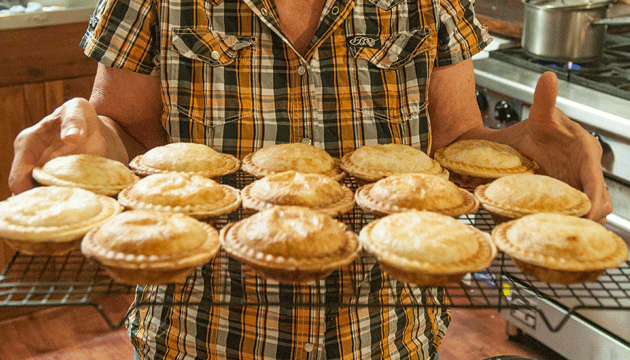Well before dawn, in some of the most remote locations in Australia, outback cooks are rising, breathing life back into smouldering open fires or majestic old AGAs, in preparation for the day’s tasks.
Story Vickie Brettschneider Photo Ken Eastwood
Raqual Humphries was 24 years old when she began her cooking career on Carlton Hill station. “My biggest challenge was that I hadn’t cooked before and I had no idea about using leftovers or what to do if stores were running low,” she says. “There were many days that tears were shed. I had a caravan to cook in, with fridges and freezers and a generator that I would start in the morning. The boys then knew it was time to get up.”
Three years later, in 1998, Raqual was in the stock camp on Moola Bulla station, responsible for feeding up to 20 ringers four times a day on an open fire with camp ovens. “The fire was my responsibility, but everyone would help collect firewood,” she says. “Stores usually arrived weekly with the bore runner.”
A cook on any large station is responsible for feeding a mishmash of famished patrons, including ringers, bore runners, grader drivers, teachers, schoolkids, families, helicopter pilots, and visitors seven days a week. Station bosses will usually try to schedule a day off each week if there is someone else who can step in – often one of the boss’s family.
Main meals, such as breakfast and dinner, are often meat-heavy, with freshly killed beef, goat, lamb or pork coming straight off the station.
Baking is a constant task. Popular sweet treats, such as fruitcake or lemon biscuits, are teamed with nutritional snacks for morning smoko. Lunch is either packed in the morning by the crew themselves to take with them or, if they’re close by, they will come back to a hearty lunch in the dining area.
This story excerpt is from Issue #123
Outback Magazine: February/March 2019










